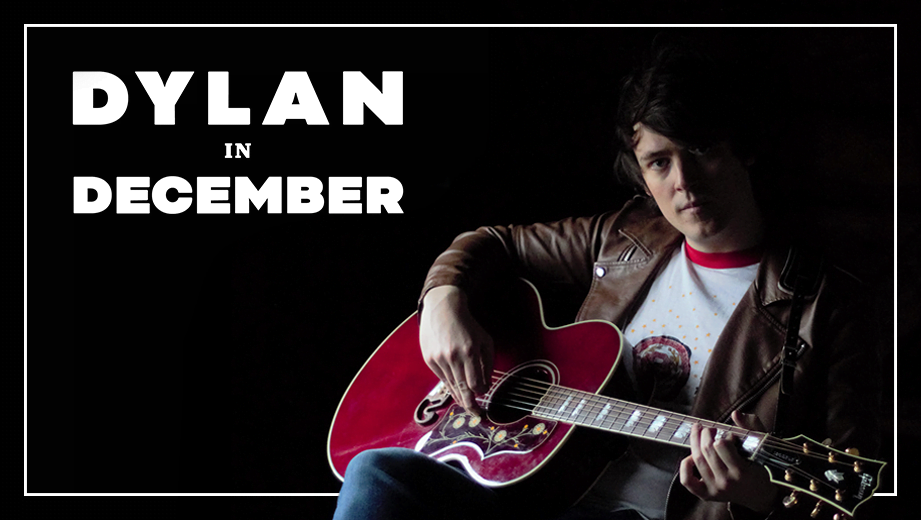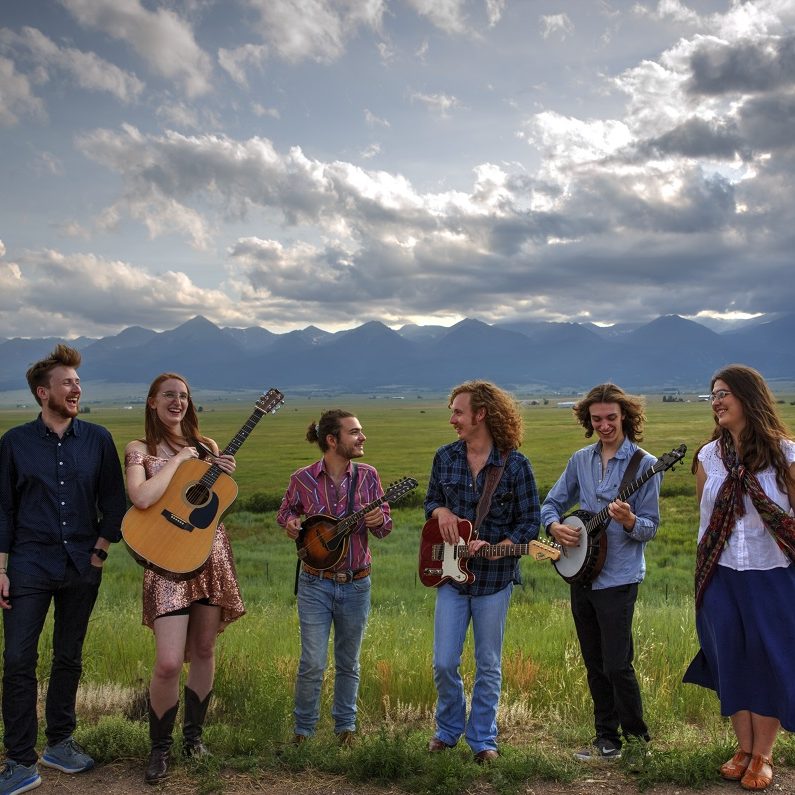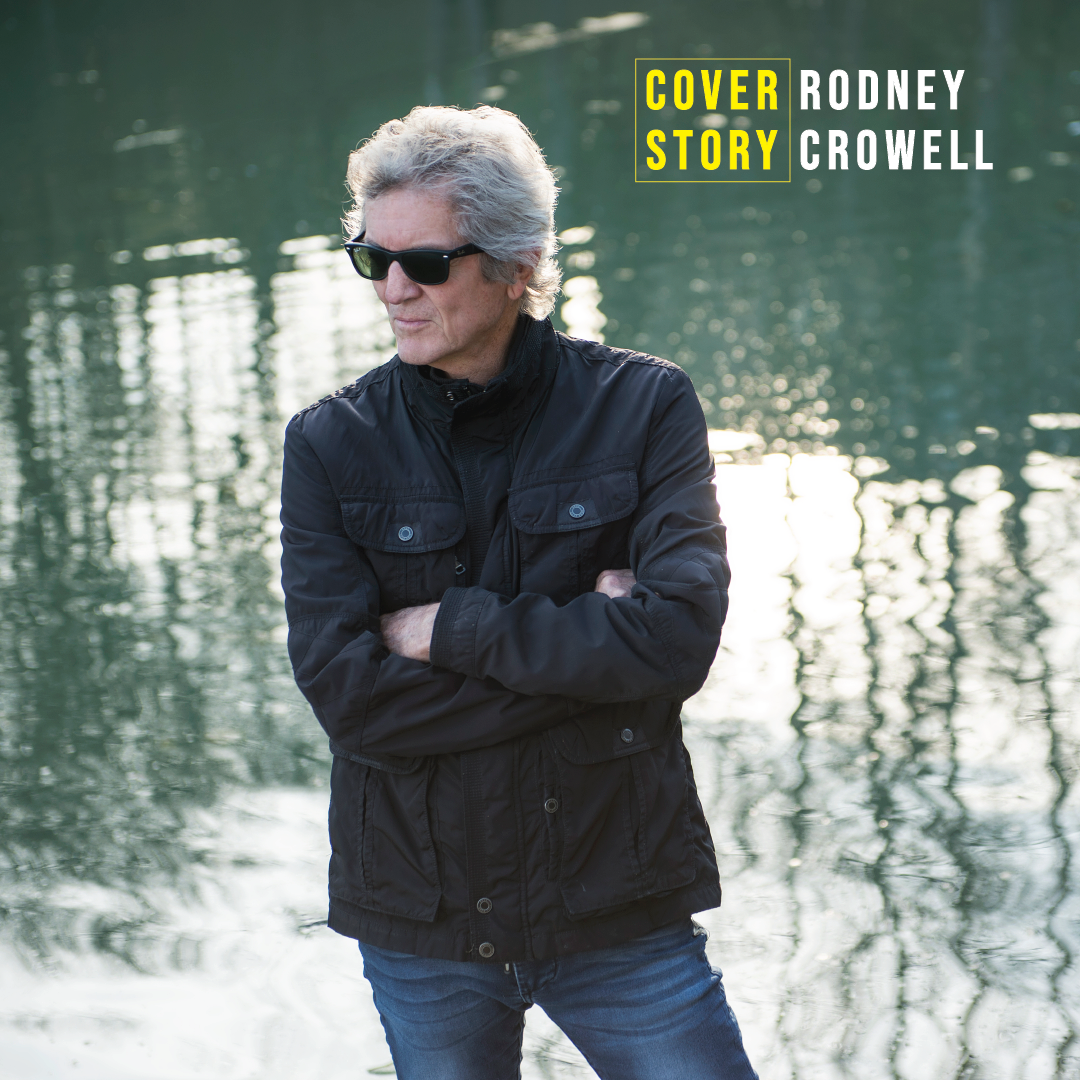For The Bluegrass Situation’s Dylan in December series, I compiled a list of Bob Dylan songs with Midwestern ties. These geographical references in song recall Dylan’s own roots, grounding some of his narratives in specific places from his past. My own roots in the Wisconsin/Minnesota/South Dakota region have given me some insights below that I hope act as a nice companion to the playlist. Enjoy! —Trapper Schoepp
“On, Wisconsin”
In 1961, Bob Dylan started writing a song about my home state of Wisconsin. In 2018, I finished it. The lyrics were unearthed last year and put up for auction at $30,000. As a Wisconsin folk singer, I felt compelled to add a link to the song’s chain. The song’s narrator is a drifter pining for the Dairy State’s finest exports: milk, cheese, and beer. I imagined a homesick traveler in a train car being rocked to sleep to the waltz of my added chorus, “On, Wisconsin / Calling me that way.” So I set the lyrics to music, got a band together, and recorded the song. We thought little of it until I got a late night email from my manager succinctly stating, “Dylan has it now.” A few months later and voila! I had landed a co-writing credit with Dylan. Only recently did I realize the significance of the date scrawled at the top of the original lyric sheet–11/20/61–the same day Dylan stepped into Columbia Recording Studios with producer John Hammond to begin his debut album.
“Highway 51″
Dylan’s eponymous debut finds the 20-year-old “rambling out of the wild west / leaving the towns I love best.” One of these beloved towns may have been Madison, where Dylan is said to have stopped as he hitchhiked to NYC. The conversational, folksy feel of album’s original compositions echoes that of “On, Wisconsin.” Bobby howls, “Yes, I know that highway like I know the back of my hand / Runnin’ from up Wisconsin way down to no man’s land.” Like Highway 61, this north-south highway starts on Wisconsin’s northern border, and runs straight down the state’s center through Madison, ultimately ending around Highway 61 near New Orleans.
“Walls of Red Wing”
Originally cut for Dylan’s second album, this ballad paints an unforgiving portrait of a juvenile correctional facility in Red Wing, Minnesota. I was born in Red Wing and often witnessed the haunting “gates of cast iron and the walls of barbed wire,” located just a stone’s throw from Highway 61. Some suggest there’s an autobiographical angle and that Bob himself was institutionalized there, but let’s not let the truth get in the way of a good story.
“With God On Our Side”
In this sprawling seven-minute song examining a world gone to warmongering, Dylan questions the sanctification of war by the state. Dylan sets up the song masterfully, framing his forthcoming sentiments within his own modest Midwestern identity: “Oh my name it is nothin’ / My age it means less / The country I come from / Is called the Midwest.”
“Girl From The North Country”
Inspired by “Scarborough Fair,” Dylan brings the framework of a traditional English folk ballad back from a trip across the pond, putting a spin on it that feels uniquely Minnesotan. In his visions of the girl, he alludes to a landscape of frozen rivers, snowflakes and heavy winds. “Please see if she’s wearing a coat so warm / To keep her from the howlin’ winds.”
“Ballad of Hollis Brown”
Set on a South Dakota farm, Dylan depicts a desolate and poverty-stricken countryside. This arrangement, characterized by a hypnotic drop D guitar tuning, can be traced back to the English murder ballad “Pretty Polly,” showing the cross-continental folk process at work. The song closes with the despondent-turned-deadly farmer taking the lives of his own family and then his own: “There’s seven people dead on a South Dakota farm / There’s seven people dead on a South Dakota farm / Somewhere in the distance there’s seven new people born.”
“North Country Blues”
This is another dark snapshot of Minnesota life off The Times They Are A-Changin’. Sung from the perspective of a coal miner’s wife, the narrative is likely inspired by Dylan’s upbringing around the Mesabi Iron Range in Minnesota. The song touches on mining tragedies within a family, corporate outsourcing of the operations, and a decaying downtown. The song works as a powerful companion to “Ballad of Hollis Brown,” chronicling the hardships faced by farmers and miners, and the communities in crisis during the first half of the 20th century.
“Highway 61 Revisited”
Dylan says it all in Chronicles: Volume One: “Highway 61, the main thoroughfare of the country blues, begins about where I began. I always felt like I’d started on it, always had been on it and could go anywhere, even down in to the deep Delta country. It was the same road, full of the same contradictions, the same one-horse towns, the same spiritual ancestors…It was my place in the universe, always felt like it was in my blood.”
“Something There Is About You”
In this hazy recollection of a past lover, Dylan sings, “Thought I’d shaken the wonder and the phantoms of my youth / Rainy days on the Great Lakes, walkin’ the hills of old Duluth.” Not unlike “Girl From The North Country,” Dylan recounts a sweet kind of love against Minnesota scenery. On the back cover of Planet Waves, Dylan gives a shout out to “My brothers of the flood, Cities of the flesh – Milwaukee, Ann Arbor, Chicago, Bismarck, South Dakota, Duluth!”
“Went To See The Gypsy”
On his New Morning album, Dylan describes a dreamlike visit to a mysterious gypsy staying at a crowded hotel. In a song that would feel right sequenced alongside “The Man In Me” on The Big Lebowski soundtrack, the narrator recounts what went down at daybreak: “So I watched that sun come rising / From that little Minnesota town.”
Photo credit: Valerie Light Hart



